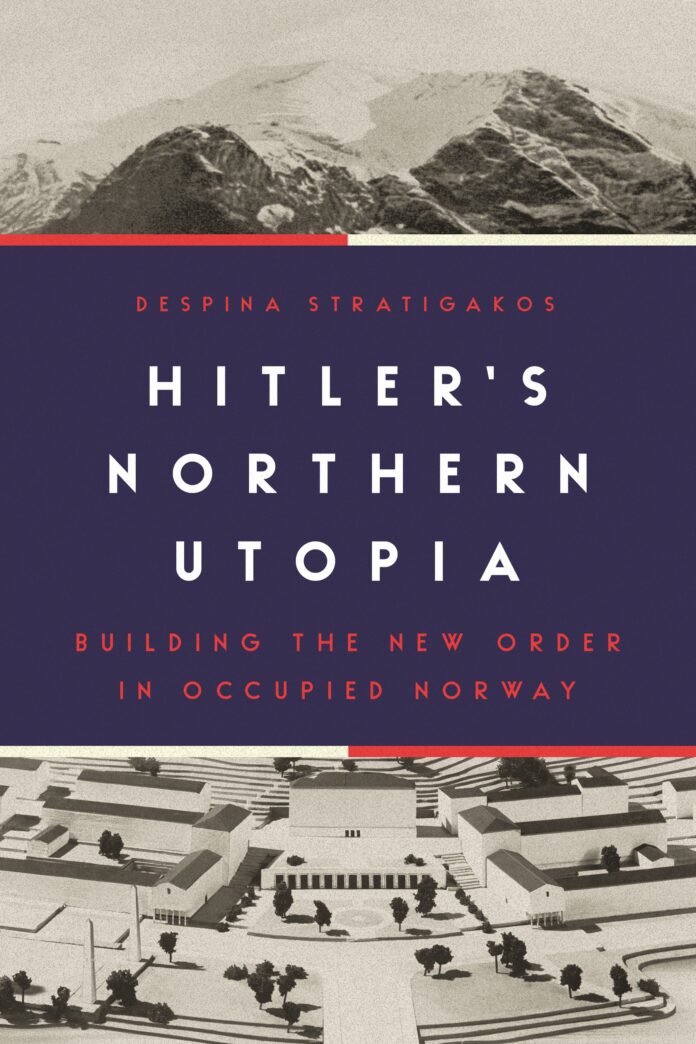(THIS ARTICLE IS MACHINE TRANSLATED by Google from Norwegian)
It was not just strategic considerations that did that Nazi Germany priority to occupy Norway. Our history, nature, culture, and not least our race, were elements the Nazis were more than happy to see as part of the Great Germanic Empire they wanted to establish. "North" was not primarily a direction or a place, but a spirit in the people.
This embrace of the Norwegian had several effects. For example, the Germans constructed a story in which they took credit for having taken care of Norwegian architecture. The Nazis also considered Norwegians to be more racist than themselves, so that an incorporation of the Norwegian heritage material would be beneficial to the Germans, but it would on the other hand also contribute to the Norwegian people being saved from decay by being incorporated into German culture.
After the occupation in 1940, many cities had to be repaired, and the Germans also wanted to partially rethink. They emphasized large public spaces, which they found were in short supply. The Germans believed that Norwegian architecture was characterized by individualistic thinking, without regard to community.

Altona / Bahrenfeld: Cigarettes-Bilderdienst 1936.)
A community based on race
This community, die national community, was clearly defined as a racial community, and Norwegians were not only accepted, but could be used for breeding. The myth of "Lebensborn" is well known. and there was a long-held notion that these were to be regular food factories where Norwegian women gave birth to Aryan children. However, there were never Nazi food factories, and it is doubtful whether this was planned. But the Lebensborn homes were a safe haven for Norwegian women who had become pregnant with German soldiers, and their children – who were thus considered to be more Aryan than their fathers. These mothers were promised that the children would be discreetly adopted into good SS families. In reality, these children were difficult to place, as the SS families were critical of the morale of women who had children out of wedlock and were willing to give them up.
Soldiers' homes
The large occupying force of 450 men was not only to be in Norway until the war was won; several of the soldiers were to settle here for good. But the barracks life was not pleasant, and the Germans therefore built magnificent «Soldatenheime».
The German women who worked at Soldatenheime found it degrading to serve beer to Norwegian women.
These were expensive welfare homes where it was also envisioned that Norwegians were welcome. They were, too, to begin with, until the German women who worked at these welfare sites found it degrading to serve beer to Norwegian women. Then this came to an end, and the strange situation had arisen that the women who were able to give birth to new Germans were not good enough to gain access to the Soldiers' Home.
Oslo was too American
The Germans had grandiose plans for Norway. In the first half of the war, they carried out extensive planning and construction work in Norway – as if we had already become part of the new Greater Germany. One of the projects was the Autobahn from Oslo to Trondheim. The Germans planned such in several occupied areas, but where a motorway in Belgium, for example, would only bring people from A to B, the Norwegian Autobahn was a prestigious project where emphasis was placed on nature experiences and that the facility could be easily combined with the landscape.
Oslo was not the Nazis' favorite Norwegian city.
Oslo was not the Nazis' favorite Norwegian city. They considered it American and unauthentic with its functionalism and densely populated workers' housing. The more they valued Trondheim with its Viking roots, Nidaros Cathedral and large public squares. Unknown to most is probably that the Germans planned to build a new Trondheim next to the existing city. This was to be located on the peninsula west of Trondheim and have 300 inhabitants – more than Oslo had.
Why not expand the existing city? It was a symbolic point: Then it would be perceived as if the Norwegian absorbed the German; the Germans wanted the opposite. It was supposed to be a German enclave, not a crucible. Central Norway was to be Germanized in the same way as Eastern Europe (where slaves and Jews were killed or displaced).

Wilhelm Kreis' sketch of the facility "Høvringberg" from 1942 was published at home in Germany. (Library of Congress, Washington [DC].)
German infrastructure
Perhaps the most important reason why the Germans looked to Trondheim was that they needed a naval base that the British could not block. They therefore planned a giant naval base adjacent to New Trondheim (by Øysanden). Hitler boasted that this would make Singapore – where the British had its most important naval base – look like a child's play in relationships.
The work of building a new infrastructure in Norway continued energetically until the end of 1942, when the fortunes of war reversed and Germany had to prioritize differently. As is well known, there was no unemployment in Norway during the war. Both ordinary workers and slave workers (prisoners of war) were used at the German facilities. There are reports that the regular employees complained that they received too little food. Then you can imagine what it was like with the rationing for the slave workers.
It was of course taboo to point this out in the first years after the war, but there is no doubt that the Nazis' construction of roads, train lines, buildings and facilities was something Norway enjoyed greatly during the reconstruction years. Many of them are still in use. No one has demanded them removed.


